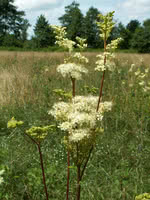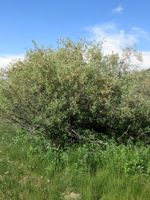Mon-Fri 9am - 5pm Mountain time
Meadowsweet vs Diamond-Leaf Willow
Filipendula ulmaria
Salix planifolia
CUSTOM GROW
CUSTOM GROW
Meadowsweet gets its name from its sweet fragrance from the creamy white flowers. It is a large upright herbaceous perennial shrub. They bloom in early summer, and with the right conditions may remain throughout the season.
Take care of where you’re planting Meadowsweet as it is known to spread.
Diamond-Leaf Willow is a native deciduous shrub known for its glossy diamond-shaped leaves, which give the shrub its name. Its catkins emerge in spring, providing an important early source of pollen for pollinators. The shrub’s dense growth also offers valuable cover and browse for wildlife, including moose and deer.
This shrub is well-suited to cool, moist habitats such as wetlands, streambanks, and forest openings. It spreads by rhizomes, helping to stabilize soils and form dense thickets. Diamond-Leaf Willow is valuable for reclamation, wetland enhancement, shelterbelt plantings, and a wide range of conservation and habitat restoration projects.

